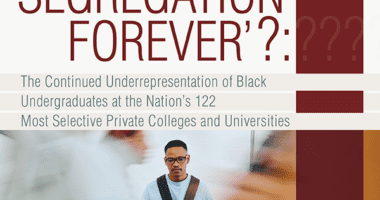Pell Grants Provide Access; Institutions Must Support Completion
The Hechinger Report just published an article on the graduation rates of Pell Grant recipients at 82 of the largest public and private institutions in the nation. Considering nearly 9 million low-income students receive Pell Grants annually, it’s a topic that we care deeply about. In fact, we’ve spent the last year collecting and analyzing the graduation rates of these very students. And, in a few weeks, we’ll share what we found.
Our study includes the Pell Grant graduation rates of nearly 1,175 public and private, nonprofit institutions across the nation. As the folks at Hechinger reveal, collecting this info is not easy. It took us over a year and a number of creative data collection strategies — surveys, repeat phone calls, emails, etc. So no one else has to go through the trouble, we will make the data available on our website — easily accessible to students, parents, policymakers, institutional leaders, and other researchers. Like many others, we are tired of waiting and asking the federal government to fill this data void.
We’ll also include overall graduation rates for the institutions in our sample, an analysis of completion gaps between Pell and non-Pell students, and a look at how colleges that serve similar types of students compare against each other with respect to Pell grads. Some colleges, it turns out, do a much better job of supporting Pell Grant recipients than others. Hechinger, for instance, calls out The University of Alabama’s abysmal 52 percent graduation rate for Pell Grant recipients. We show in our report there are other schools with student demographics comparable to Alabama, but with much higher graduation rates for Pell Grant recipients. Michigan State (72 percent) is one; George Mason University (68 percent) is another. Pell Grant recipients at George Mason actually graduate at a higher rate than non-Pell Grant recipients.
These divergent truths at similar colleges lead us to believe the Pell Grant program isn’t the problem. The Pell Grant has always been about making college more accessible for students who otherwise can’t afford to go. The Pell Grant wasn’t designed as completion intervention. The government relies on colleges and universities, which also benefit as the final recipient of Pell funds, to ensure the students they admit are provided with the supports needed to complete a degree. It seems pretty clear that some institutions are better at this than others.
Thanks to Hechinger and others who have called attention to the importance and need for annual data on Pell recipient outcomes. Without this data, we won’t ever know how well these students are being served. Check back next month, when we release our data and highlight some of the best practices we’ve found at colleges and universities supporting Pell students well.









